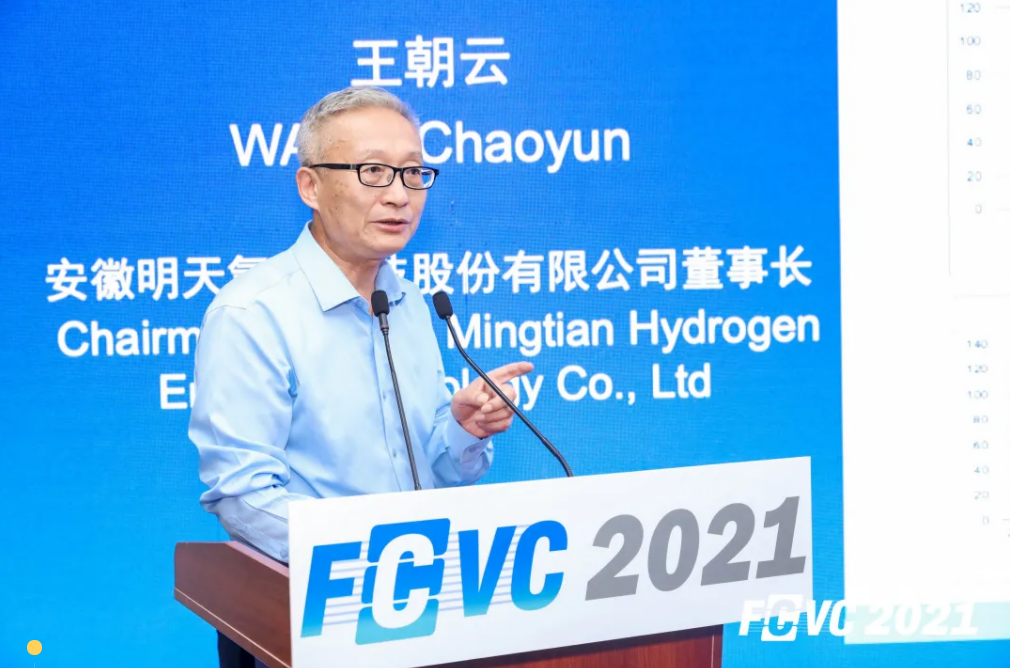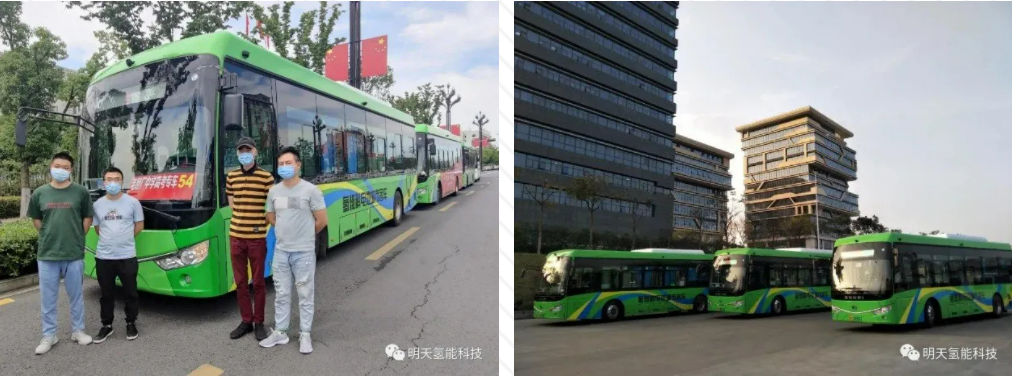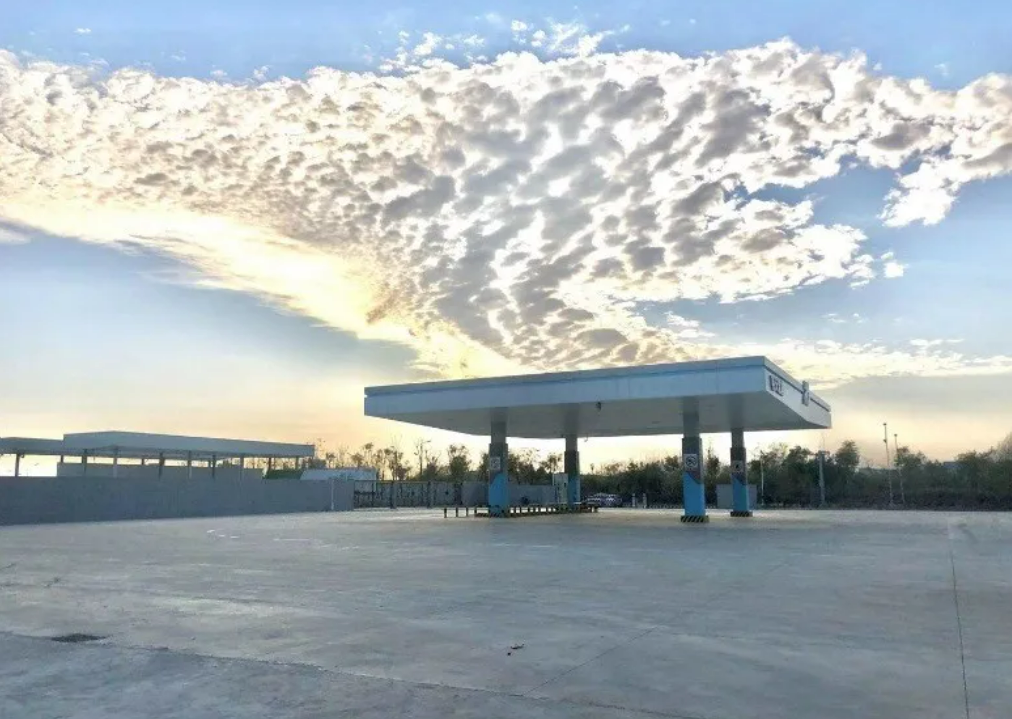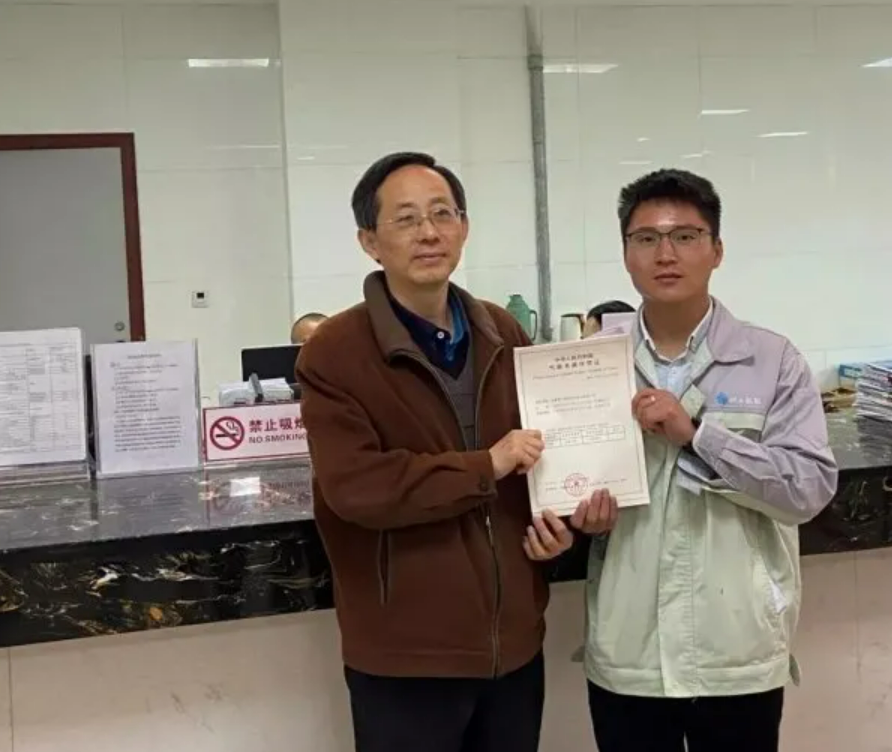 2021/6/10 0:00:00
2021/6/10 0:00:00 3278
3278
"We are not only making qualified products, but also products that users like." Mr. Wang Chaoyun's eyes have a kind of wisdom, self-confidence, majesty and humility that have settled down over the years.
On June 10, 2021, Mr. Wang Chaoyun, Chairman of Anhui Tomorrow Hydrogen Energy Technology Co., Ltd. (hereinafter referred to as "Tomorrow Hydrogen Energy"), took the theme of "Development of Hydrogen Energy is an Opportunity for a Great Country-"Practice of Fuel Cell Industrialization"". A speech was made at the FCVC (2021) sub-forum.

China Hydrogen Energy Network compiled Mr. Wang Chaoyun's speech and conducted interviews on key issues.
Mr. Wang Chaoyun pointed out that hydrogen energy and fuel cells are one of the best routes to achieve "carbon peak" and "carbon neutrality." Whether the industry can develop rapidly and healthily depends on the quality, performance, convenience of hydrogen refueling, and The cost. He predicts that it will take about two to three years for the hydrogen price to reach 20 yuan/kg.
Wang Chaoyun: Recently, there have been more talks about "carbon peak" and "carbon neutrality". General Secretary Xi specifically proposed: to achieve carbon peak and carbon neutrality is a solemn commitment made by my country to the world. Party committees and governments at all levels must take it. There are traces on the iron, and the strength of the stepping stones. Clear timetables, road maps, and construction drawings. Therefore, governments at all levels are now tightening their efforts, and the latter will become tighter. This is closely related to our hydrogen energy and fuel cell industry.
Regardless of the subsequent declaration policies and the policies of various regions, this is a general trend. The current carbon activity emission target is 9.9 billion tons, and the carbon peak is 10.2 billion. There is only 3% room for growth. In the next ten years, the economic growth rate will be about 6%, so the use of coal will also increase by 2%, and carbon emissions will definitely exceed this figure.
Various technical routes are looking for ways. At present, hydrogen energy and fuel cell routes are a very good route. I expect that (hydrogen) heavy trucks and light trucks will have more than 40%-50% of products by 2030. Occupation rate.
The focus is on the quality and performance of the product, the convenience of hydrogen filling, and the cost of hydrogen. The cost of the entire process must be lower than the cost of a traditional car. How much lower? What users can accept is 1/3 of traditional energy. So how much is about 1/3? The price of hydrogen is about 20-25 yuan per kilogram.
At present, the cost of hydrogen in some places has reached 30 to 35 yuan, and there is still a gap between 20 and 25 yuan. However, the hydrogen fuel cell industry has just begun to heat up. With the change of technical routes, reaching 20 yuan per kilogram is just around the corner. Yes, it is estimated that it will only take two to three years.
Mr. Wang Chaoyun predicts that before 2020 or 2021, it will be a technical route; the industrialization route will be a bit longer, and it will take four to five years or more. Industrialization and marketization are complementary to each other. It is expected that the marketization route will start from 2025 to 2030. Customers' willingness to actively purchase is a sign of the opening of marketization.
Wang Chaoyun: Based on our understanding, the previous stage (before 2020 or before 2021) is the process of arguing, proving and justifying the technical route. The early stage was a battle of the technological route, and the later it was the route of industrialization. Is the industrialization route vertical integration or horizontal integration? Is the degree of specialization very high? Or is the degree of automation very high? It is the process of argumentation and competition of these lines.
I remember what Mr. Peng wrote just now, traditional cars have grown from a few kilowatts to a hundred kilowatts-100 years, and then from 100 kilowatts to 200 kilowatts-200 years, we have grown from tens of kilowatts to more than 100 kilowatts in just a few years. 200 kilowatts, I feel a little worried, what are you worried about?
The comprehensive factors of reliability, durability, service life and so on are not so urgent, and the suitable ones are suitable.
Then, the industrialization route is estimated to be a little longer, (and it will take) four to five years, and it may be longer. Of course, industrialization and marketization are complementary, and there is no strict distinction. In a sense, only a certain degree of marketization can promote better technological progress. On the contrary, technological progress can also bring about greater marketization.
It is expected that from 2025 to 2030 will be a market-oriented route. There are various ideas, various methods, and various modes of competition, but the most important thing is to take the customer's initiative to buy as the boundary. Have you bought a car for 2 million now? No, there is not one, it is equal to zero. The proactive market demand is still really problematic.
China Hydrogen Energy Network: What kind of methods do you think can stimulate customers to actively purchase?
Wang Chaoyun: There is no incentive to actively purchase. It is necessary to proceed from the customer’s own needs, out of the comprehensive idea of the customer’s own interests, functions and preferences, to have a fundamental understanding of the (hydrogen) environment, to recognize and accept the function of fuel cell vehicles, and to like this The product.
Mr. Wang Chaoyun believes that maintaining a high level of technology and improving R&D capabilities are currently the top priorities in the industry. The second is the core of industrialization-to improve engineering capabilities, we must focus on product quality, not only to make qualified products, but also to make products that users like.
Wang Chaoyun: Maintaining technological heights and improving R&D capabilities are currently the top priorities in the industry. Our work continues to advance under the personal leadership of the expert team of the Dahua Institute. For example, the projects of the Ministry of Science and Technology, the science and technology projects of Anhui Province, etc., are all based on this A same purpose.
The second task is industrialization. Industrialization has depth and breadth, and the core is to improve the ability of engineering. The depth I talked about, such as integration has been achieved with membrane electrodes, and even some early materials, we can also do a lot of experiments and discussions with our collaborators. This is the depth.
We decomposed the fuel cell into eight major processes, and at the same time made eight major production lines. The eight major production lines are basically intelligent, but there are also many problems in the process. Each production line has found the corresponding bottleneck, and there is a bottleneck in the process. There are equipment bottlenecks, etc., as well as some bottlenecks in our operation process. These bottlenecks are being overcome one by one.
China Hydrogen Energy Network: How will hydrogen energy overcome these bottlenecks tomorrow?
Wang Chaoyun: Experiment, experiment, experiment, keep experimenting. Because it is ultra-precision processing, ultra-precision processing has higher requirements for equipment technology and operating environment. In the production process, the technical standards will be continuously improved. The improvement process of the technical standards is also the optimization process of the equipment process. In turn, higher requirements will be placed on the technical parameters of the products and equipment. Are these requirements readily available at home and abroad? If you don't have it, you need to develop. Development itself is creation.
Therefore, it is not terrible to have a bottleneck. It is to discover and solve problems, and finally to innovate. This is something that will be encountered constantly in the production process of fuel cell equipment, because it is a brand-new industry.
How many 10,000 sets of production lines are there in China? a lot of. However, there is still a difference between the production line of 10,000 sets of qualified products and the production line that 10,000 sets of users like.
So engineering is: easy to build, difficult to do well. Now we are still continuing to do this work, and at the same time accumulating some new experience, to establish reference experience and lessons for the subsequent 100,000 sets, 200,000 sets of continuous, larger production lines.
China Hydrogen Energy Network believes that the "depth" and "breadth" of tomorrow's hydrogen energy industrialization are by no means on paper, but based on rich accumulation:
1. Depth
Tomorrow, Hydrogen Energy will build the country’s first 10,000-unit fuel cell stack and system automation and intelligent chemical plant, and develop "eight processes" with independent core technologies: metal unipolar plate stamping process, metal bipolar plate laser welding process, metal The bipolar plate coating process, MEA production process, stack assembly process, stack activation & test process, fuel cell system assembly process, fuel cell system test process, realized the production line through.

2. Width:
1) Increase cooperation between upstream and downstream enterprises to open up the industrial chain
Tomorrow Hydrogen and Shanghai Shunhua New Energy System Co., Ltd. and the Anhui Petroleum Branch of Sinopec Sales Co., Ltd. respectively reached strategic cooperation in the fields of "hydrogen production, transportation, and hydrogen refueling station construction and operation".
Tomorrow, hydrogen energy will be involved in fuel cell buses, logistics vehicles, passenger vehicles, forklifts, special vehicles, rail transit, ships, energy storage power stations and even drones. There are currently 15 hydrogen buses in Lu’an City. The fuel cell system is all provided by Tomorrow Hydrogen.
2) Layout industrial bases and increase industrial agglomeration:
From 2019 to the present, Tomorrow Hydrogen has deployed industrial bases and R&D centers in Lu'an, Shanghai, Beijing, Qingdao, Chongqing and other places, in the key raw materials of fuel cells, core components and stacks, fuel cell vehicle demonstration applications, and hydrogen refueling. Stations, comprehensive utilization of hydrogen sources, and even "combined heat and power" links have been deployed.
3) Strengthen industry-university-research cooperation:
Tomorrow Hydrogen has in-depth cooperation with the Dalian Institute of Chemical Physics of the Chinese Academy of Sciences, Shanghai Tongji University and other scientific research institutes, and has established academician workstations. With the collaboration of Academician Yi Baolian and the team, the cooperation of production, education and research is used as a link to promote hydrogen fuel cell technology. In-depth research and development in the field.
Wang Chaoyun: Another thing is to focus on product quality. It took us a year or two to pass an auto parts quality management system certification standard-IATF16949, an industry-wide and relatively strict standard. Now we have got this certificate, but getting it only means getting started. It will implement a lot of details in the management process, and the requirements are very strict.
In Mr. Wang Chaoyun's view, the hydrogen energy industry has a "base ecological circle". There must be abundant hydrogen sources in the middle of the circle, suitable transportation distance, reasonable price, and high industrial agglomeration before market-oriented applications can be realized. Finally, he briefed on the results of tomorrow's hydrogen energy.
Wang Chaoyun: In our opinion, the hydrogen energy industry has a "base ecological circle". There must be abundant hydrogen sources in the middle of the circle. The hydrogen transportation radius is appropriate. The price after refilling is about 35 yuan. With a high degree of industrial agglomeration, market-oriented applications can finally be realized.
We have established an ecological circle in Lu'an, we are still doing the second in Chongqing, and the third in Qingdao, and we will continue to do it in the future. Looking for suitable opportunities across the country, we will definitely promote the ecological circle in earnest.
Speaking of the demonstration operation of hydrogen fuel cell vehicles, we ran a total of 15 vehicles in Lu'an, all of which were buses. Some of them ran more than 80,000 kilometers. It is estimated that by next month it will be 100,000 kilometers and 70,000 kilometers. , 60,000 kilometers. There happened to be a college entrance examination base (Maotanchang Middle School) two days ago, and 7 fuel cell buses were randomly selected to send candidates for college entrance examination. The quality and reliability requirements of the vehicles are still very high. As a result, it worked well after three days of operation.

Wang Chaoyun: Tomorrow, Hydrogen Energy has built a 10,000-unit factory in Lu'an. In 2017, the research institute was built in Shanghai, and it will be located in Shanghai Automobile Financial Port in Anting Town. Now the construction of the second hydrogen refueling station in Chongqing has started, and it will be put into use in July. The third hydrogen refueling station is selected in Qingdao, and there is a fourth hydrogen refueling station in Lu'an. The hydrogen refueling station in Lu'an is still good and is currently profitable. Last year, I got the license for hydrogen charging for vehicles, and now all the operating qualification certificates have been obtained.
According to the official website of Tomorrow Hydrogen Energy: Tomorrow Jin’an Hydrogen Refueling Station is the first commercial hydrogen refueling station in Anhui Province, with a refueling capacity of 1200Kg and a hydrogen storage capacity of 1,000kg. It is also the first batch of demonstration vehicles in Lu’an City and a complete fuel cell vehicle in the surrounding area. It provides hydrogen supply for trials and internal product testing of the company. In the initial stage, it has the hydrogen refueling capacity of hundreds of hydrogen fuel-operated vehicles.

China Hydrogen Energy Network: It is difficult for many hydrogen refueling stations not to lose money. How did Jinan hydrogen refueling stations achieve profitability?
Wang Chaoyun: Continue to raise the amount. It will be profitable if the filling amount is enough, and the intake price is still cheap.
China Hydrogen Energy Network learned from Tomorrow's hydrogen energy related personnel that the hydrogen at Jin'an hydrogen refueling station mainly comes from Hefei and Nanjing. The hydrogen sales price is 60 yuan/kg, and the daily refueling amount is about 200 kg in the first half of this year.
The "Lu'an Hydrogen Energy Industry Development Plan (2020-2025)" proposes that in 2030, the cumulative scale of the promotion and application of fuel cell vehicles in Lu'an will reach about 3,000, and 15 hydrogen refueling stations will be built. With the further implementation of the development plan for the hydrogen energy industry in Lu'an City, with the strength of tomorrow's hydrogen energy, there is still greater development potential.

In April 2021, Tomorrow Hydrogen obtained the first vehicle-use hydrogen gas cylinder filling permit in Lu'an City, and "Tomorrow Jin'an Hydrogen Refueling Station" became the first hydrogen refueling station in Anhui Province that has the qualification to charge hydrogen gas for vehicles.
Wang Chaoyun: Finally, I want to share an old saying that hydrogen is omnipotent. why? I believe: hydrogen is omnipotent. Thanks!
Clean the Sky & Brighten the Future
China Hydrogen Energy Network Evaluation
Industrialization and marketization complement each other. Only a certain degree of marketization can promote better technological progress. On the contrary, technological progress can also bring about greater marketization. Tomorrow, hydrogen energy will continue to explore on the route of technology, industry and marketization, stride forward in a low-key and down-to-earth manner, and use hydrogen energy to "clean the world and brighten the sky."
Maybe we can't predict the future of the hydrogen energy industry, but tomorrow hydrogen will allow us to see the possibility: "Tomorrow with hydrogen energy will definitely be even better."